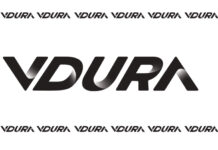Seagate has delivered another $2.5bn-plus revenue quarter as it spits in the eye of nearline disk cannibalisation by flash.
Top line numbers for the second fiscal 2021 quarter ended January 1 were $2.62bn in revenues, a smidge down in the year-ago $2.69bn, and net income of $280m, a bigger smidge down from last year’s $318m. The revenue number beats Seagate’s guidance from last quarter. Seagate’s mid-point revenue guidance for next quarter is $2.65bn, a bit less than last year’s $2.72bn.
In Q4, bulk capacity nearline disk drives accounted for 58 per cent of revenues; and legacy desktop and notebook/fast enterprise 2.5-inch drives contributed 38 per cent of revenues. Enterprise systems and SSDs made up the balance.
There were record exabyte capacity shipped numbers, at 97.2EB – well up on the year-ago’s 71.3EB. Seagate reckons nearline drive capacity shipped will grow 35-40 per cent Y/Y.

“Seagate delivered strong, double-digit revenue, earnings and free cash flow growth in the December quarter supported by broad-based improvement across nearly every served market and geography, and we had solid customer demand for our mass capacity products,” CEO Dave Mosley said.
“We are well positioned to benefit from the tremendous opportunities we foresee ahead and remain focused on enhancing value for our customers, employees and shareholders.”
That tremendous opportunity is the gigantic increase in data storage needs both on-premises and, more importantly, in the hyperscaler and public cloud markets.
Seagate is moving cautiously from ongoing perpendicular magnetic recording technology (PMR) to next-generation heat-assisted magnetic recording (HAMR) but it is in no rush. The first HAMR drives, with 20TB capacity, shipped without fanfare in November. The company is ramping up 18TB drive production ready to take over from existing 16TB drives as the market sweet spot transitions.
It is also developing the Lyve Storage Platform line of storage arrays and systems to extend its market but so far this is micro-potatoes, revenue-wise.








